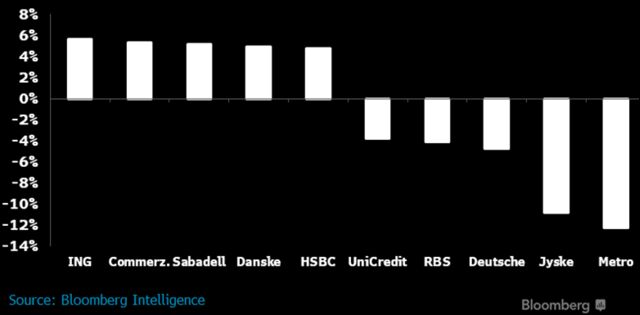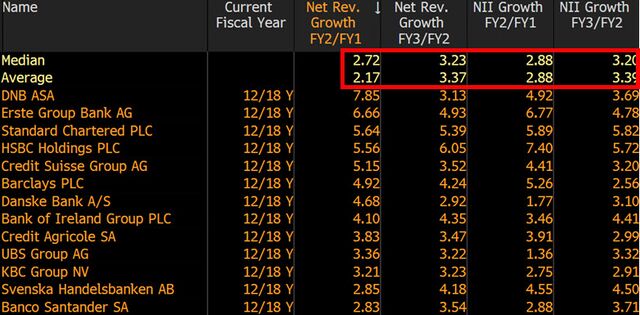Νέο ασφαλιστικό τοπίο για 250.000 ελεύθερους επαγγελματίες, αυτοαπασχολουμένους και αγρότες διαμορφώνει από την 1η Ιανουαρίου 2019 το ασφαλιστικό σχέδιο νόμου, που πήρε τον δρόμο προς τη Βουλή. Πρόκειται για τη 2η νομοθετική παρέμβαση της κυβέρνησης, που περιέχει θετικές διατάξεις και αναμένεται να συζητηθεί και να ψηφιστεί με «πανηγυρικό» και προεκλογικό τόνο, όπως συνέβη και με τα αναδρομικά των ενστόλων και των ειδικών μισθολογίων. Με τα πρώτα 7 άρθρα του σχεδίου νόμου άλλωστε (από τα συνολικά 37), αλλάζει το σκηνικό των εισφορών για τους μη μισθωτούς, με εισόδημα πάνω από 7.032 ευρώ, καθώς οι εισφορές τους για κύρια ασφάλιση μειώνονται από 200 έως και 4.690 ευρώ τον χρόνο. Με άλλες διατάξεις του σχεδίου νόμου, ρυθμίζονται θέματα διοικητικού χαρακτήρα, προβλέπεται η αύξηση των τμημάτων του Σώματος Επιθεώρησης Εργασίας, δίνεται η δυνατότητα στον ΟΑΕΔ να καλύπτει το κόστος της δωρεάν μετακίνησης των ανέργων με τα μέσα μαζικής μεταφοράς μέσω ειδικών προγραμμάτων και εξομοιώνονται οι εργαζόμενοι στα δύο ελεγκτικά σώματα του υπουργείου Εργασίας, το ΣΕΠΕ και τα Περιφερειακά Ελεγκτικά Κέντρα Ασφάλισης (ΠΕΚΑ).
Αναλυτικά, από 1/1/2019 το ποσοστό της μηνιαίας ασφαλιστικής εισφοράς για τον κλάδο κύριας σύνταξης διαμορφώνεται από 20% σε 13,3% για τους πρώην ασφαλισμένους σε ΟΑΕΕ, ΕΤΑΑ και ΟΓΑ. Προσοχή όμως, όπως ορίζεται ρητά στο νομοσχέδιο που παρουσιάζει σήμερα η«Κ», η ελάχιστη μηνιαία εισφορά για τον συγκεκριμένο κλάδο δεν μπορεί να υπολείπεται του ποσού που αντιστοιχεί σε ποσοστό 20% επί του κατώτατου βασικού μισθού άγαμου μισθωτού άνω των 25 ετών (117,22 ευρώ).
Με αίτησή τους προς τον ΕΦΚΑ, οι ασφαλισμένοι θα μπορούν οποτεδήποτε να επιλέξουν ανώτερη βάση υπολογισμού των ποσοστιαίων εισφορών από εκείνη που προκύπτει βάσει του μηνιαίου εισοδήματός τους. Στην επιλογή του ασφαλισμένου, παραμένει και το χρονικό διάστημα κατά το οποίο θα εισφέρει αυξημένες εισφορές. Η εφαρμογή της νέας βάσης υπολογισμού αρχίζει από την πρώτη του επόμενου μήνα υποβολής της αίτησης και παύει να ισχύει αυτοδικαίως, οποτεδήποτε προκύψει ανώτερη βάση υπολογισμού βάσει του μηνιαίου εισοδήματος, καθώς και από τον επόμενο μήνα από την ανάκληση της αίτησης.
Ξεκαθαρίζεται, επίσης, πως αν ο ασφαλισμένος επιλέξει να καταβάλλει υψηλότερη εισφορά, δεν θα εφαρμόζονται οι εκπτώσεις 5% – 50% του νόμου Κατρούγκαλου για τους αυτοαπασχολουμένους του ΕΤΑΑ. Για τους λοιπούς, που θα καταβάλλουν την υποχρεωτική εισφορά, οι εκπτώσεις διατηρούνται ως έχουν σήμερα, δηλαδή επί του αθροίσματος των εισφορών για κύρια σύνταξη και για υγεία.
Για τους αυτοαπασχολουμένους του πρώην ΕΤΑΑ (άρθρο 2), από την 1η Ιανουαρίου 2019 καταργούνται οι εκπτώσεις που προβλέπονταν για την πρώτη 5ετία από την υπαγωγή τους στην ασφάλιση. Και αυτό, γιατί η μηνιαία εισφορά καθορίζεται επίσης στο 13,3%, ήτοι χαμηλότερα από τις μέχρι πρότινος προβλεπόμενες. Διατηρείται όμως η ελάχιστη μηνιαία βάση υπολογισμού στο 70% επί του εκάστοτε προβλεπόμενου κατώτατου βασικού μισθού. Προσοχή: Οι εκπτώσεις που ίσχυσαν τη διετία 2017-2018 εξακολουθούν να θεωρούνται ασφαλιστικές οφειλές και προβλέπεται η επιστροφή τους.
Τι ισχύει για αγρότες, η επικούρηση και η ρύθμιση χρεών
Το ύψος της μηνιαίας ασφαλιστικής εισφοράς για τους αγρότες (άρθρο 3) από την 1/1/2022 και μετά διαμορφώνεται σε 13,33% επί του εισοδήματός τους, όπως αυτό καθορίζεται με βάση το καθαρό φορολογητέο εισόδημα από την ασκούμενη αγροτική δραστηριότητα κατά το προηγούμενο φορολογικό έτος.
Στη μεταβατική περίοδο που ισχύει έως το 2022 οι εισφορές διαμορφώνονται σε 12% το 2019, 12,67% το 2020, 13% το 2021 και φθάνουν στο 13,3% το 2022. Το κατώτατο ασφαλιστέο μηνιαίο εισόδημα ορίζεται ως το ποσό που αναλογεί στο 70% του εκάστοτε προβλεπόμενου κατώτατου βασικού μισθού. Η ελάχιστη μηνιαία εισφορά για το 2019 δεν μπορεί να υπολείπεται του ποσού που αντιστοιχεί σε ποσοστό 18% επί του κατώτατου ασφαλιστέου μηνιαίου εισοδήματος, το 2020 δεν μπορεί να υπολείπεται του ποσού που αντιστοιχεί σε ποσοστό 19% επί του ορισθέντος κατώτατου ασφαλιστέου μηνιαίου εισοδήματος, το 2021 δεν μπορεί να υπολείπεται του ποσού που αντιστοιχεί σε ποσοστό 19,5% του κατώτατου ασφαλιστέου μηνιαίου εισοδήματος και από 1/1/2022 και μετά δεν μπορεί να υπολείπεται του ποσού που αντιστοιχεί σε ποσοστό 20% επί του ανωτέρω ορισθέντος κατώτατου ασφαλιστέου μηνιαίου εισοδήματος.
Οι εισφορές εφάπαξ και επικούρησης για τους μη μισθωτούς, επανακαθορίζονται αναδρομικά, από την 1/1/2017 ανεξαρτήτως εισοδήματος. Ειδικότερα, προβλέπεται ότι το ποσό της μηνιαίας εισφοράς στον κλάδο εφάπαξ παροχών ορίζεται σε ποσοστό 4% υπολογιζόμενο επί του 70% του εκάστοτε προβλεπόμενου κατώτατου βασικού μισθού άγαμου μισθωτού άνω των 25 ετών. Επίσης, προβλέπεται ότι το ποσό της μηνιαίας εισφοράς στον κλάδο επικουρικής ασφάλισης του ΕΤΕΑΕΠ ορίζεται έως τον Μάιο του 2019 σε ποσοστό 7%, από 1/6/2019 έως 31/5/2022 σε ποσοστό 6,5% και από 1/6/2022 και μετά σε ποσοστό 6%, υπολογιζόμενων όλων των ανωτέρω ποσοστών επί της ίδιας ως άνω μειωμένης βάσης υπολογισμού. Με άλλη διάταξη στο σχέδιο νόμου του υπουργείου Εργασίας προβλέπεται η ρύθμιση ληξιπρόθεσμων οφειλών, από το 2016 και μετά, των κλάδων υγείας των πρώην Ταμείων προς ασφαλισμένους, αλλά και γιατρούς και παρόχους. Η διαδικασία θα ισχύσει έως το τέλος του 2019 και προβλέπει 100% εξόφληση προς τους ασφαλισμένους-ασθενείς. Αντιθέτως, στους ιδιώτες και παρόχους προβλέπονται εκπτώσεις από 5% έως και 45%. Οφειλές προς παρόχους υπηρεσιών υγείας που εκκαθαρίζονται με τις διατάξεις της επίμαχης ρύθμισης συμψηφίζονται με τυχόν ληξιπρόθεσμες κάθε είδους οφειλές αυτών προς τον ΕΦΚΑ, πλην των ρυθμισμένων. Μάλιστα, όπως αναφέρεται, οι ληξιπρόθεσμες υποχρεώσεις της εν λόγω διάταξης εκκαθαρίζονται και πληρώνονται εξαιρετικά κατά παρέκκλιση των περί παραγραφής διατάξεων.
Πηγή: kathimerini.gr






















